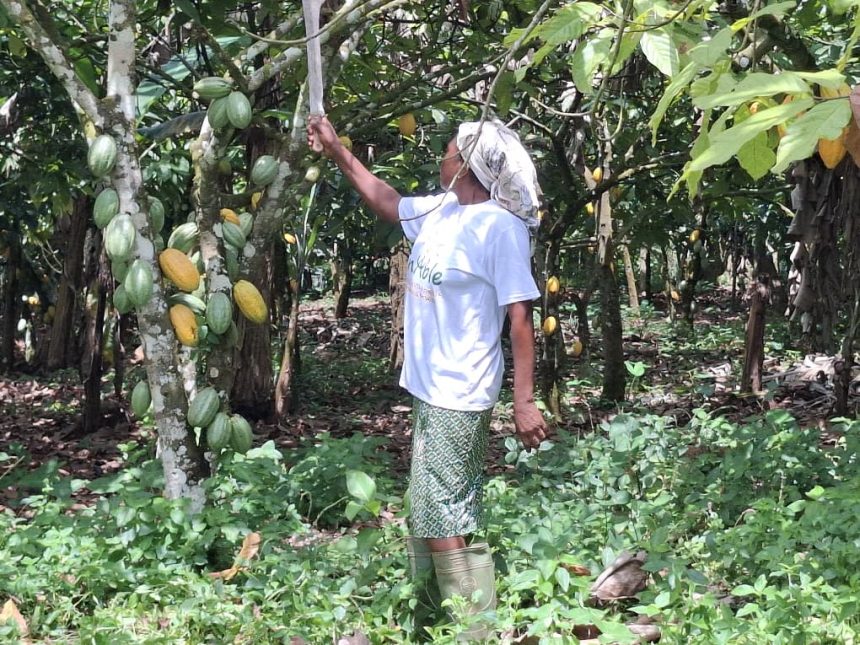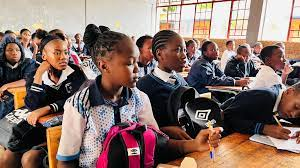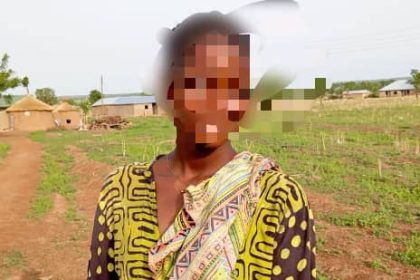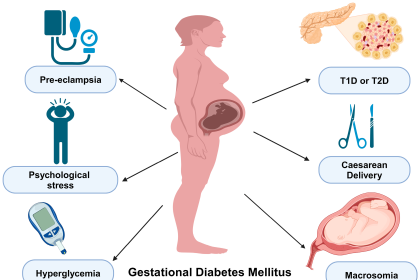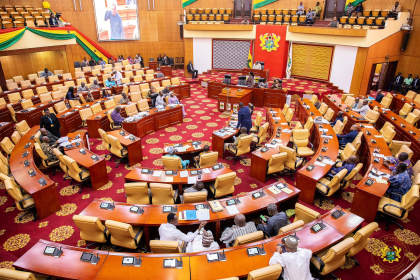Mary Bampoe, 57, tends her four-and-a-half-hectare cocoa farm at Potroase in the Atewa District, carefully pruning weeds while preserving shade trees and intercropping with cocoyam.
This season, cocoa pods hang abundantly from stems and branches, signalling a promising harvest.
“This year I am expecting about 20 bags,” she says. “In recent years, I used to get not more than four bags.”
“The extension officers taught us how to prune properly, keep some trees on the farm for shade and grow extra crops. It has helped. Now I can support my grandchildren and other dependents,” she adds.
Mary is among approximately 24,000 farmers in the Atewa Hotspot Intervention Area (HIA) who have adopted climate-smart cocoa practices under the Ghana Cocoa Forest REDD+ Programme (GCFRP).
Beneficiaries have received tools such as pruners, boots, and cutlasses, along with continuous extension support to boost productivity while conserving forest landscapes.
The Atewa HIA spans the Atewa, Denkyembour, and East Akim districts and is one of six HIAs established nationwide to reduce greenhouse gas emissions from deforestation and forest degradation.
These HIAs are projected to help Ghana avoid around 10 million tonnes of carbon emissions between 2019 and 2024, valued at US$5 per tonne, amounting to US$50 million in potential carbon payments.
The GCFRP is part of REDD+, a global climate mitigation strategy under the United Nations Framework Convention on Climate Change (UNFCCC), which promotes sustainable forest management, conservation, and improved land-use practices aligned with national climate goals.
In Ghana, where cocoa is the second-largest foreign exchange earner and supports nearly 800,000 smallholder farmers, climate change and forest loss pose serious threats to long-term production.

Shifting rainfall patterns, rising temperatures, and the removal of shade trees have begun to affect yields across cocoa-growing regions.
Community water support
Beyond farming, the programme has extended social interventions to communities.
In Akyem Asama Zongo, a mechanised borehole now serves approximately 700 residents. Women and children gather daily to fetch water before heading to school, farms, and markets.
Previously, residents walked over two miles to the Abresu Stream, which had become unsafe for drinking.
Mr Baah Preprah, Assembly Member for the area, said the situation had disrupted daily routines, especially for schoolchildren.
“Children used to walk long distances each morning just to find water, which affected their time in school. That situation has now changed,” he said.
Positive outcomes on farms
Mr Collins Akonnor, Atewa HIA Officer, said the adoption of climate-smart cocoa methods had led to improved yields and increased awareness of the importance of maintaining trees on farms.
“Many farmers report that their yields have increased after applying the recommended practices,” he said.
“Farmers now appreciate keeping shade trees on their farms. These trees support cocoa growth and help sustain the environment.”
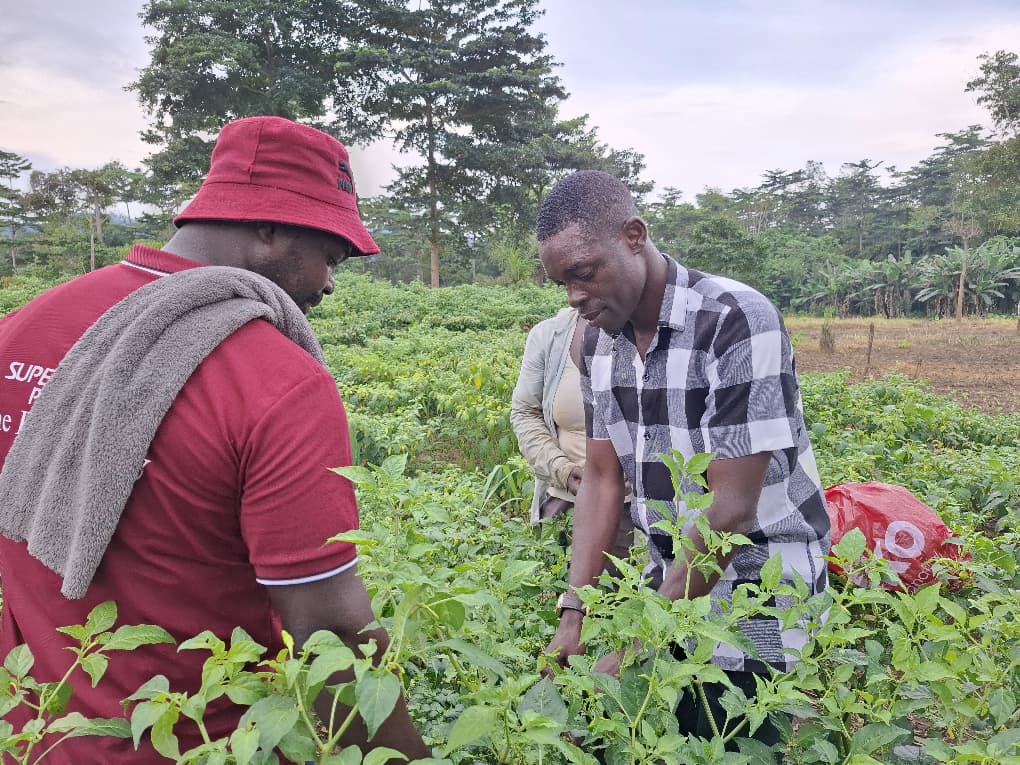
He urged farmers to continue applying the practices and share knowledge with others to extend the benefits across communities.
Carbon payments and community benefits
Ms Ivy Ashiley, Benefit Sharing Officer at the Climate Change Unit of the Forestry Commission, explained the distribution of benefits from carbon payments to farmers and communities.
Between 2019 and 2021, Ghana received US$21.8 million for verified emission reductions under the programme.
Of this amount, 27 per cent was allocated to government and partner institutions including the Forestry Commission, Ghana Cocoa Board, and Metropolitan, Municipal and District Assemblies.
Ms Ashiley said funds directed to communities were used to provide farm inputs and support projects such as water facilities.
She said that the programme included alternative livelihood support to help households earn income beyond the cocoa season.
National content
Cocoa farming and forest conservation are increasingly interconnected in Ghana.
As forests are cleared, the conditions necessary for cocoa cultivation-moderate temperatures, consistent rainfall, and fertile soils-are compromised.
Experts warn that without intervention, some cocoa-growing areas may become unsuitable for production in the future.
Programmes like the GCFRP aim to enhance cocoa productivity while discouraging forest clearing.
They also foster collaboration among farmers, traditional leaders, government agencies, and private partners.
Sustaining progress
While farmers and communities have reported improvements, some told the Ghana News Agency that further support is needed, including access to seedlings, organic soil enrichment, and regular extension services.
Community leaders also expressed concern about illegal mining activities in parts of Atewa, warning that such practices could undermine progress in landscape restoration.
The Atewa range remains one of Ghana’s vital ecological and economic zones, serving as a watershed and cocoa-producing area.
Stakeholders emphasise the need for sustained investment in community livelihoods and strict enforcement of environmental regulations.
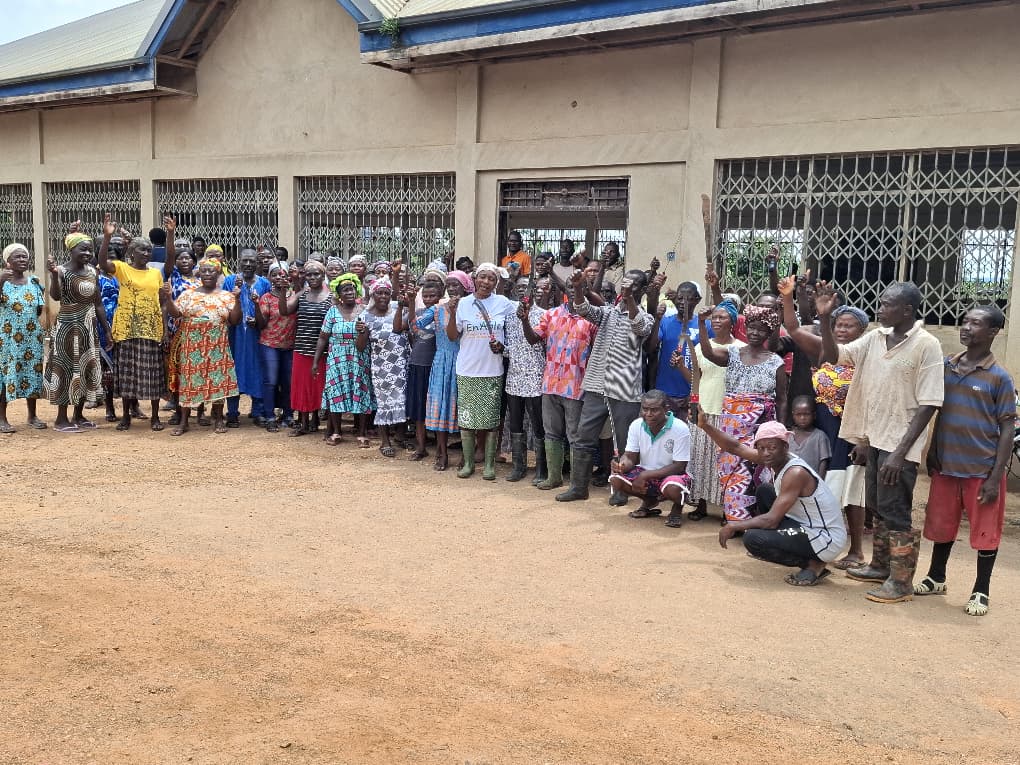
For farmers like Mary, the impact of climate-smart interventions has been transformative, reinforcing the need to expand and sustain the programme across more cocoa-growing communities.
“The work continues,” she says. “We will keep the trees and use the practices we were taught. It is helping us.”
GNA


